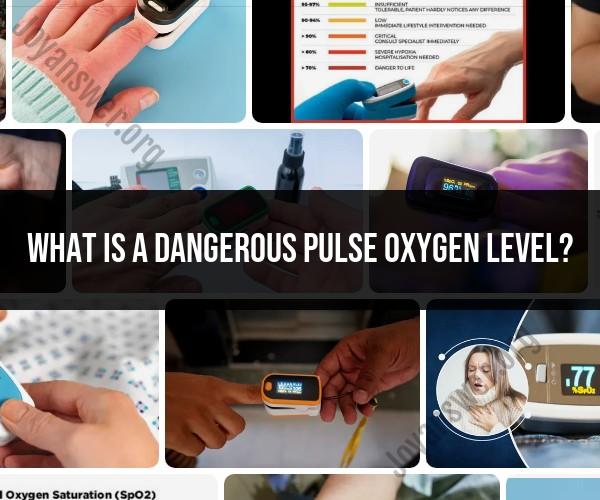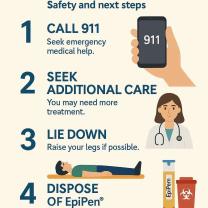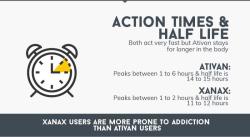What is a dangerous pulse oxygen level?
Pulse oxygen level, often referred to as oxygen saturation or SpO2, measures the amount of oxygen carried by red blood cells in your body. It is typically expressed as a percentage and is an important indicator of your respiratory and circulatory health. A healthy individual will typically have a resting SpO2 level of around 95% to 100%. However, what constitutes a "dangerous" pulse oxygen level can vary depending on the context and individual factors. Here are some general guidelines:
Normal Range: A normal oxygen saturation level is usually considered to be 95% or higher. This is the level at which most healthy individuals will maintain their SpO2.
Mild Hypoxemia: Oxygen levels between 91% and 94% are considered mildly low and may not be an immediate cause for concern in otherwise healthy individuals. However, it's important to monitor and investigate the underlying cause.
Moderate Hypoxemia: When SpO2 drops below 90%, it's considered moderate hypoxemia. This is a concerning level, especially if it persists or is accompanied by symptoms like shortness of breath, confusion, or chest pain. Medical attention should be sought promptly.
Severe Hypoxemia: SpO2 levels below 85% are considered severe hypoxemia and are a critical medical emergency. Immediate medical intervention is necessary as it can lead to organ damage and even be life-threatening.
It's crucial to note that the interpretation of oxygen saturation levels can vary based on individual factors, including age, underlying health conditions, altitude, and more. For example, some individuals with chronic lung diseases may have lower baseline SpO2 levels without immediate danger, while others may experience severe distress even with a modest drop in SpO2.
Additionally, context matters. Low oxygen levels are especially concerning when accompanied by symptoms such as severe shortness of breath, confusion, chest pain, or bluish skin color (cyanosis). In such cases, seeking medical attention is vital regardless of the specific SpO2 reading.
Always consult with a healthcare professional for personalized guidance on what constitutes a dangerous oxygen level for your specific situation, and never hesitate to seek immediate medical help if you or someone you're with experiences severe symptoms or a significant drop in SpO2.
Dangerous Oxygen Levels: What You Need to Know
Oxygen is essential for life. Every cell in your body needs oxygen to function properly. When oxygen levels drop too low, it can lead to serious health problems, including organ damage and death.
There are a number of things that can cause dangerous oxygen levels, including:
- Respiratory problems: Asthma, COPD, pneumonia, and other respiratory problems can make it difficult for your body to get enough oxygen.
- Heart problems: Heart failure and other heart problems can also reduce the amount of oxygen that is delivered to your body's tissues.
- Altitude: Oxygen levels are lower at high altitudes, which can lead to altitude sickness.
- Certain medications: Some medications, such as opioids and sedatives, can depress your breathing and lead to low oxygen levels.
If you have any of the following symptoms, it is important to seek medical attention immediately:
- Shortness of breath
- Rapid breathing
- Wheezing
- Chest pain
- Lightheadedness
- Confusion
- Bluish tint to the lips or skin
Oxygen Saturation and Health: Identifying Critical Levels
Oxygen saturation is a measure of how much oxygen is being carried in your blood. It is typically measured using a pulse oximeter, a small device that is clipped to your finger.
Normal oxygen saturation levels are between 95% and 100%. Levels below 90% are considered low and can be dangerous.
Critical oxygen levels are different for everyone. However, as a general rule, oxygen saturation levels below 90% are considered critical and require immediate medical attention.
When Low Oxygen Becomes a Concern: Recognizing Danger
Low oxygen levels can become a concern when they cause symptoms such as shortness of breath, rapid breathing, wheezing, chest pain, lightheadedness, and confusion.
If you have any of these symptoms, it is important to seek medical attention immediately. Low oxygen levels can be dangerous, especially for people with underlying health conditions such as heart disease or lung disease.
Here are some tips for preventing low oxygen levels:
- Avoid smoking and secondhand smoke.
- Get regular exercise.
- Eat a healthy diet.
- Maintain a healthy weight.
- Get regular medical checkups.
- If you have any underlying health conditions, such as heart disease or lung disease, be sure to manage them carefully.
If you are concerned about your oxygen levels, talk to your doctor. They can help you to determine if you need to be monitored for low oxygen levels and can develop a plan to keep you safe.












